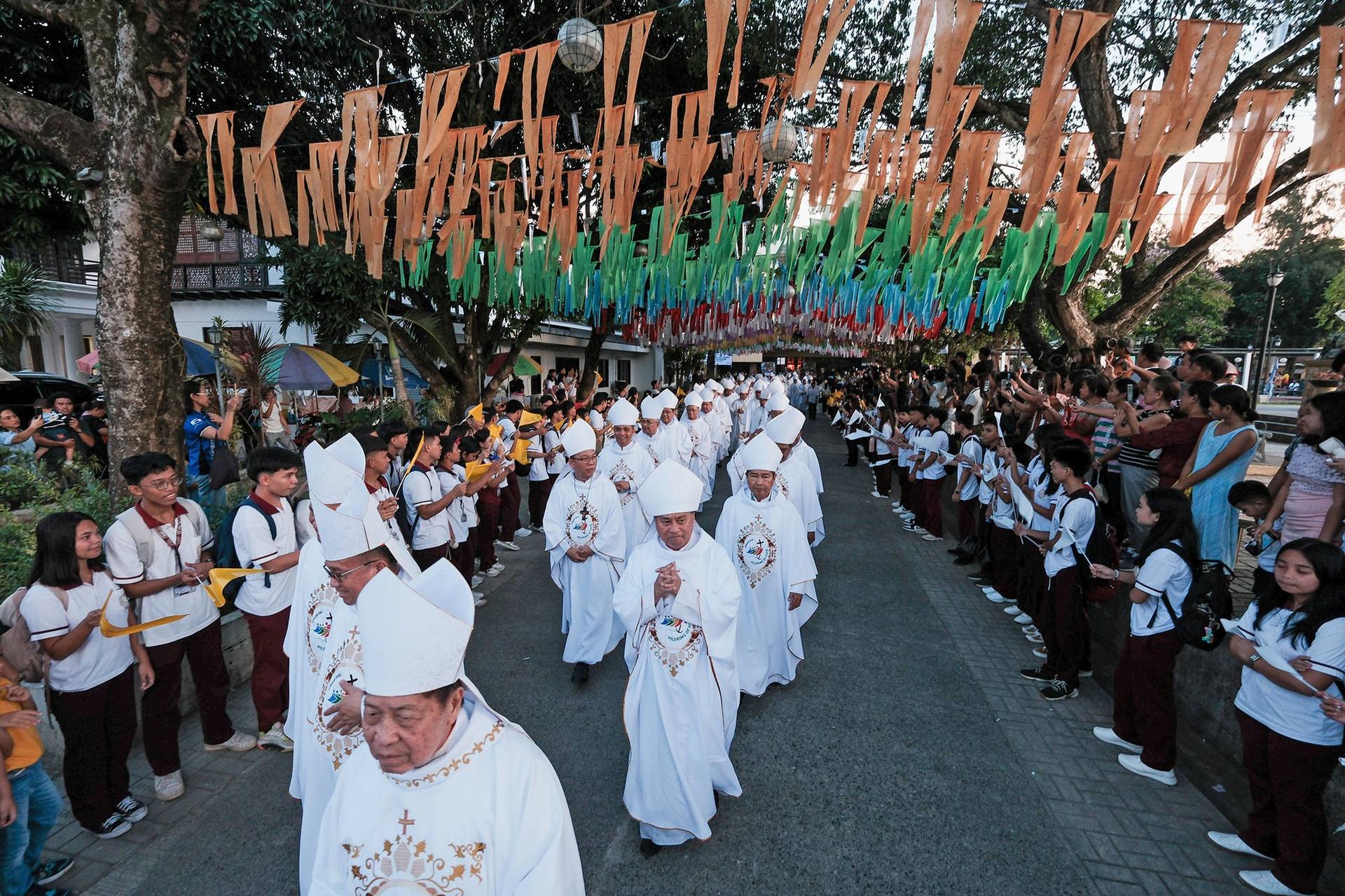LEICESTER, United Kingdom – One of the best-known writers of the early 20th century could also be a model of sanctity, but the priest charged with compiling a report on the potential of sainthood for G.K. Chesterton says the Church has to determine how much ‘devotion’ to him exists, rather than simple ‘admiration.’
Best known in the United States for Orthodoxy, his groundbreaking defense of Christianity, Chesterton is most famous in his homeland for the invention of Father Brown, a priest detective more interested in converting the criminals he catches than he is in incarcerating them.
Chesterton – who was born May 9, 1874 and died June 14, 1936 – was considered one of the most influential writers of his time, and his frequent literary adversary, George Bernard Shaw, called him “a colossal genius.”
Born an Anglican, Chesterton converted to Catholicism in 1922.
In an era when the likes of Shaw, Oscar Wilde and H.G. Wells were challenging the tenets of Christianity, Chesterton was the leading voice challenging the modernist tendencies. It should be noted that despite his political differences with Shaw and Wells, he considered both men to be friends.
“There is clearly a huge amount of admiration for Chesterton around the world. But I have been tasked with finding about how much devotion to him is there rather than admiration,” said Canon John Udris.
He was given this task in 2013 by Bishop Peter Doyle of Northampton in order to determine whether a cause for canonization should be opened for the writer.
RELATED: American Chesterton Society supports possible sainthood cause
“He [Doyle] has been receiving requests from around the world to open Chesterton’s cause and wanted to respond to those increasing requests,” Udris said.
“I have received testimonies from around the world, but the most significant support has come from the U.S., Canada and South America,” he added.
The report will be submitted later this summer.
Udris told Crux he has received many testimonies from people who credit their receptions into the Catholic Church to the influence of Chesterton, but he said the more significant stories are those “who describe that influence as a ‘live one’ whereby they felt his prayerful presence as they were reading him.”
The priest said a way of teasing out that difference between devotion and admiration “is to say it’s one thing to love reading Chesterton but does reading him lead into a relationship with him. And does that relationship lead to a deeper relationship with Christ?”
Chesterton does not fit the description of a saint most have in their mind: He certainly wasn’t an ascetic, and his large size and healthy appetite were often used to poke fun at him – even by himself.
He was married, and devoted to his wife Frances, who served as his personal manager and often took dictation for her husband.
Udris admitted Chesterton certainly doesn’t fit the typical mold when it comes to sanctity, calling him a “cigar-smoking, pleasures-of-life-loving person.”
“But I think this may actually be a good thing,” the priest told Crux.
“He helps us see humor, for example, as part of holiness too, like one of his great patron saints, Thomas More. Also, because it would be good to have more married lay people like him to be role models for us,” he said.
Chesterton would also be an ecumenical saint. Much of his writing – including Orthodoxy and his first Father Brown stories – were written when he was an Anglican. The Episcopal Church in the United States has even instituted a feast day for Chesterton on June 13.
“My feeling is that he was waiting for his wife Frances – who was a devout Anglican – to come to see things as he did and hoping for the moment when they could be received into the Catholic Church together. It must have been a difficult decision for him to finally have to take that step on his own. In the event she was received four years after her husband,” Udris told Crux.
“In fact, some cherish the hope that his wife Frances might be declared a saint with him,” he said.
Chesterton– like C.S. Lewis a generation after him –directed his writings to appeal to a broad range of Christians (although some of his later works were specifically Catholic in nature), and his direct response to modernist ideas that are still popular today mean he continues to be widely read.
“His style of apologetics certainly appeals to Evangelicals,” Udris said.
Chesterton’s fiction is also gaining a new audience: Since 2013, the BBC has been airing episodes of a new television series “Father Brown” – starring Mark Williams as the priest detective – although Udris says it has been “spiced up for a modern audience.”
After he finishes his report, Udris said it will be up to the bishop to decide – in consultation with the Bishops’ Conference of England and Wales and the Vatican’s Congregation for the Causes of Saints – whether to open a formal cause.
Of course, that would just be a first step – if a cause is opened, and the Vatican determines Chesterton had “heroic virtues,” he would become Venerable; a miracle credited to his intercession would then be needed for him to be beatified; and then a second miracle would be needed for him to be formally canonized a saint. The entire process can take years, even decades or centuries.
“One of the questions it is necessary to answer is why it might be timely for Chesterton to be declared a saint in our time,” Udris said.
“I think he would be a great icon for the new evangelization because he combined clarity with charity. He had the ability to defend the Catholic faith in a very effective way with those who did not share his views. And making even his opponents feel respected and loved,” he said.
Pope Francis is certainly an admirer: While still Archbishop of Buenos Aires, he approved a prayer that Chesterton’s wisdom be more widely spread across the world.
And during one of his first daily Masses in his first year as pope, Francis quoted an “English writer” who said heresy is a “truth…that has gone mad.” That writer? Chesterton.
But it might be some time before we find out if that admiration rises to the level of devotion.

















